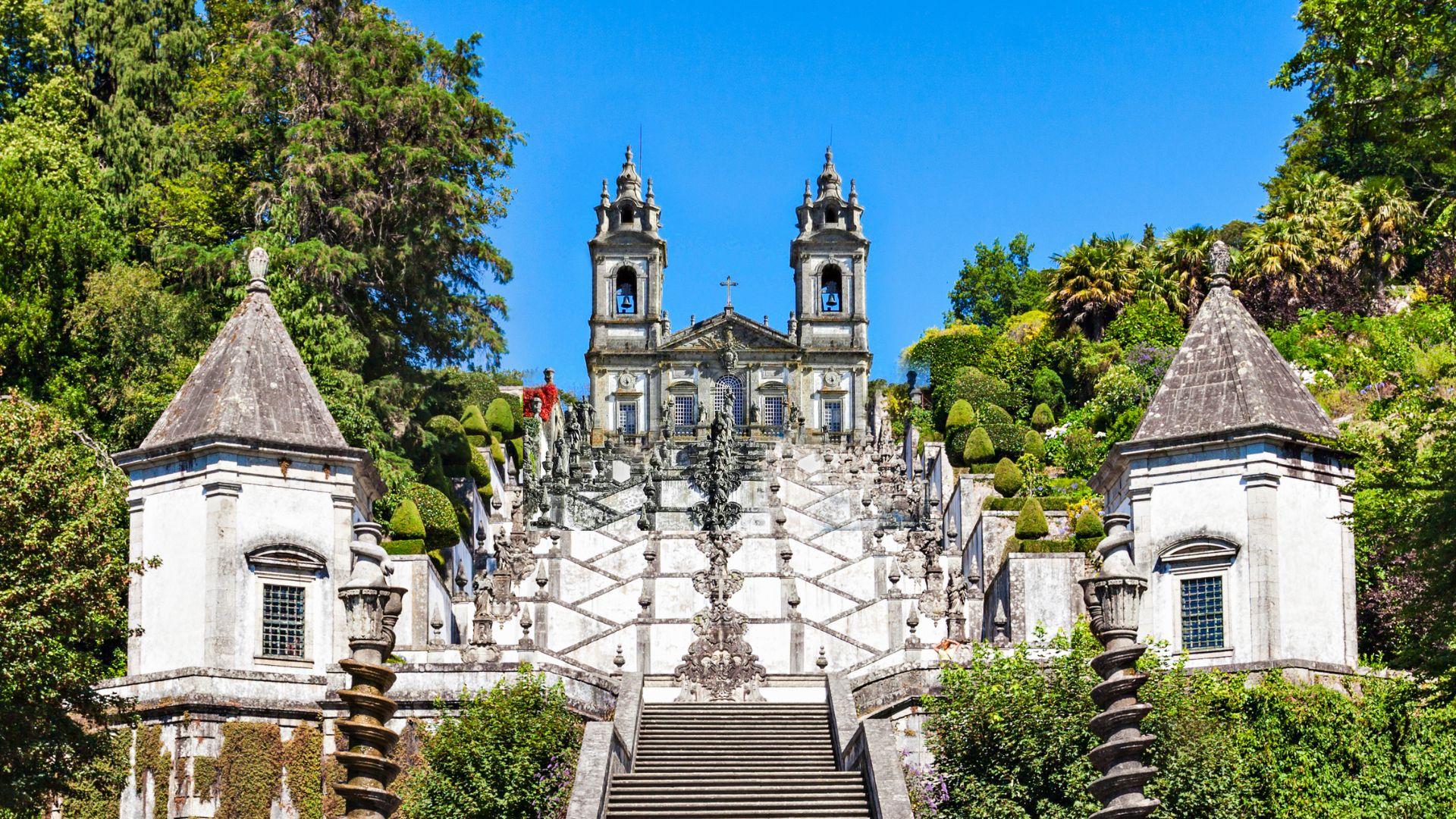Guimarães is known as the birthplace of Portugal, and walking its medieval streets honestly feels like flipping through the pages of a living storybook. This city, once the country’s first capital, is where Portugal’s national identity really started to take shape, way back in the day.
The heart of Guimarães is a UNESCO World Heritage Site. You’ll spot ancient charm everywhere—stone-paved squares, colorful facades, and impressive landmarks around nearly every corner.
As I wandered past the castle’s sturdy walls and poked around the grand Palace of the Dukes of Braganza, I couldn’t help but imagine the generations who once called these places home.
There’s something magnetic about getting lost in the narrow lanes, stumbling across hidden cafes, and pausing in lively plazas where the past and present seem to overlap.
If you’re after a destination that mixes history, culture, and a bit of storybook magic, Guimarães honestly should be on your Portugal list.
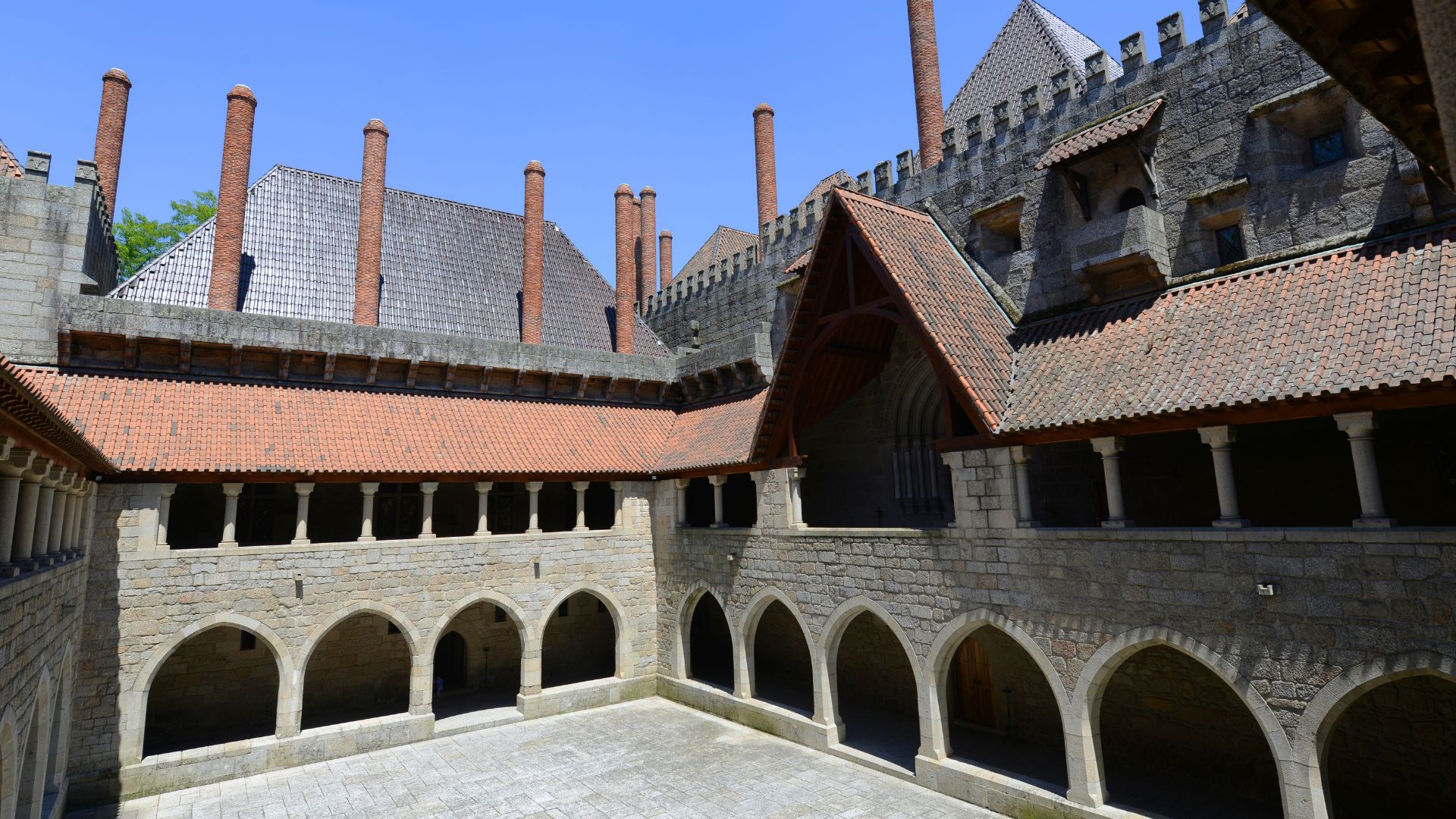
Why Guimarães is the Birthplace of Portugal
Guimarães packs layers of Portuguese history into its medieval streets and monuments. Walking through the center, I quickly realized why it’s so important as the starting point of the Portuguese nation.
Afonso Henriques and the First King of Portugal
Afonso Henriques, who was born in Guimarães in the early 12th century, stands out as probably the most defining figure in Portuguese history. He led the fight for independence from the Kingdom of León and became the first King of Portugal.
Everywhere I looked, statues and stories seemed to bring his legacy to life.
The Castle of Guimarães sits on a hill and served as his childhood home. Key battles happened right here.
As I explored the castle’s sturdy walls, I could almost picture young Afonso Henriques getting ready for battle. His ambition and leadership turned Guimarães into the launch pad for what would eventually become an independent Portugal.
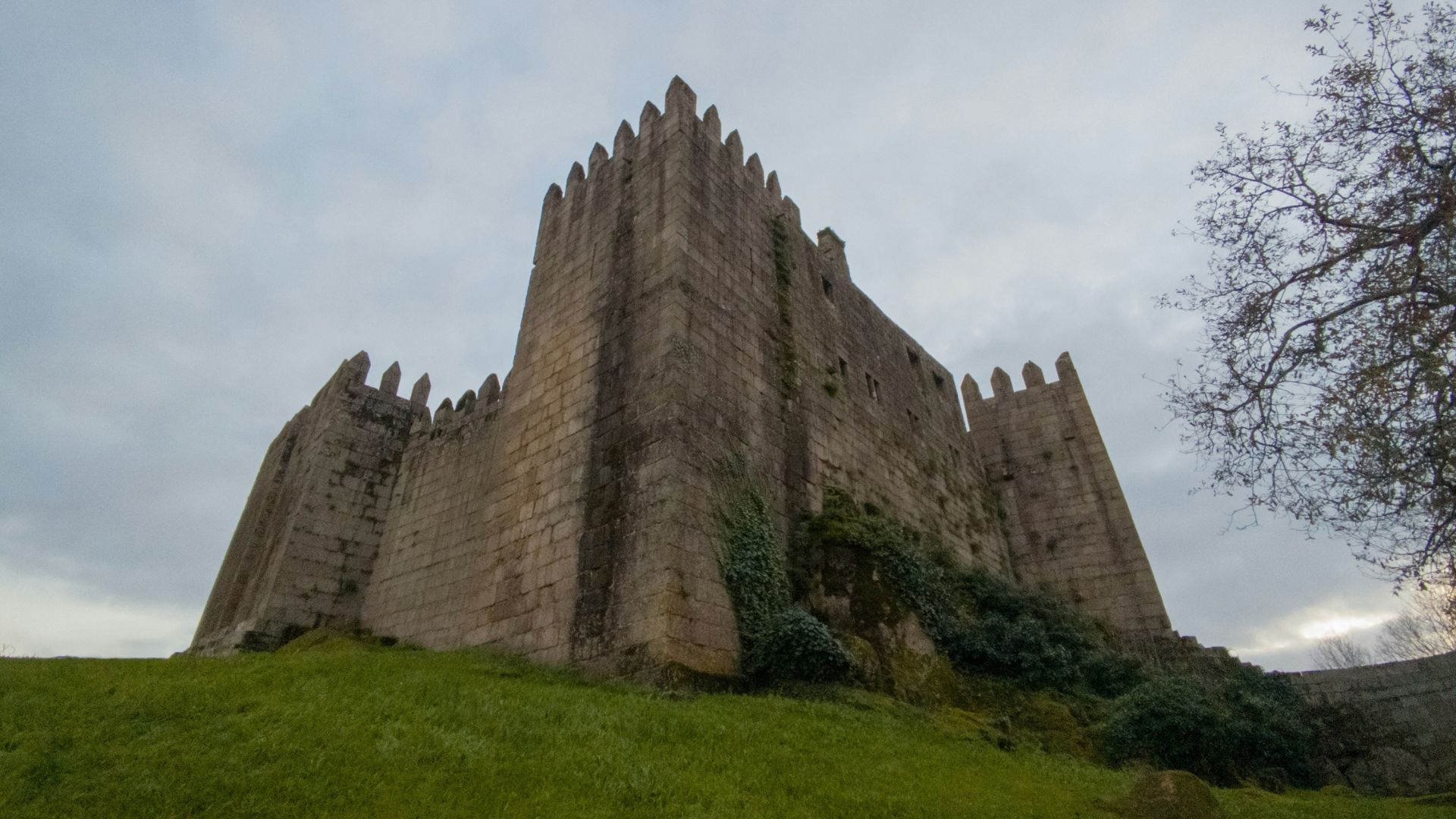
Formation of the Portuguese Nation
Guimarães isn’t just about royalty—it’s about the birth of a country. In 1128, the city became the stage for battles and political shifts that led to the foundation of the Portuguese nation.
The famous Battle of São Mamede unfolded right on Guimarães’ doorstep, changing the region’s destiny.
As I wandered the stone streets, I noticed how the medieval city center, still so well preserved, echoes with the beginnings of a nation.
The mix of narrow lanes and grand squares turned the city into the early capital of the County of Portugal, where big decisions shaped the future.
Aqui Nasceu Portugal: The Famous Inscription
Don’t miss the inscription “Aqui Nasceu Portugal” (“Portugal Was Born Here”) etched into the old city walls. I found it near the entrance to the historic center, and honestly, seeing it made the story of Guimarães feel even more real.
This simple phrase sums up centuries of history and pride. The spot has become a must-stop for anyone wanting to really grasp the city’s role as the cradle of Portuguese identity.
Standing by those words, I felt connected to the roots of a nation and understood why Guimarães is cherished as the true birthplace of Portugal.
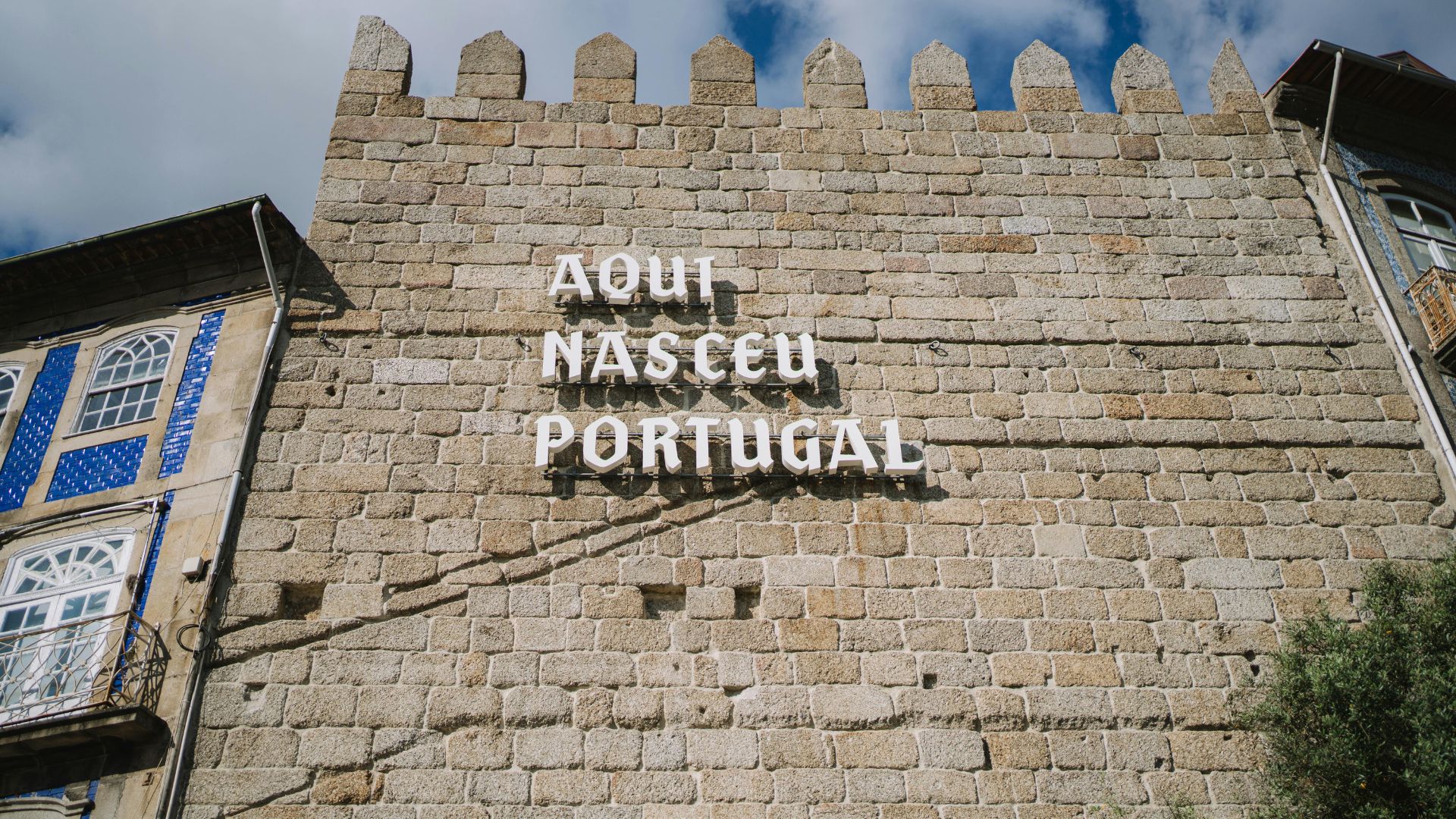
Exploring the UNESCO World Heritage Historic Center
The historic center of Guimarães tells Portugal’s story through its preserved architecture, medieval streets, and lively city squares.
This walkable town, recognized by UNESCO and once named a European Capital of Culture, brings the past to life at every turn.
Wandering Medieval Cobblestone Streets
Right after I entered the medieval center, the maze of cobblestone streets pulled me in. Each narrow alley whispered stories from centuries ago.
The buildings, made from old stone and wood, stood tall and close together, casting cool shadows on the paths below.
Getting a little lost was half the fun, honestly. The gentle slopes and curves led me past colorful doorways, wrought-iron balconies, and tiny local shops selling pastries and handmade crafts.
Historic houses lining the streets often have laundry hanging overhead, which somehow makes the place feel lived-in and real.
Nearly every turn opened onto a small square, a hidden archway, or maybe a wall decorated with azulejos (those classic Portuguese tiles). Walking these lanes felt like moving through living history, where the medieval town just blends into the rhythm of modern life.
Largo da Oliveira and Santiago Square
I stepped out into the vibrant heart of the historic city center: Largo da Oliveira. Gothic arches surround this square, and lively cafés fill the air with the smell of coffee and fresh pastries.
An old olive tree stands in the center, a nod to the square’s name, while the grand Nossa Senhora da Oliveira Church keeps watch over everything.
Nearby, Praça de Santiago (Santiago Square) felt a bit quieter but just as charming. Pastel-colored townhouses with red-tiled roofs create a cozy, inviting space.
Locals and travelers sit at outdoor tables, sharing stories and sampling northern Portuguese treats.
Both squares are perfect for people-watching and soaking up the historic atmosphere. For me, they offered some of the best views of Guimarães’ medieval estate, with ancient facades blending with the friendly buzz from the cafés and events often happening outdoors.
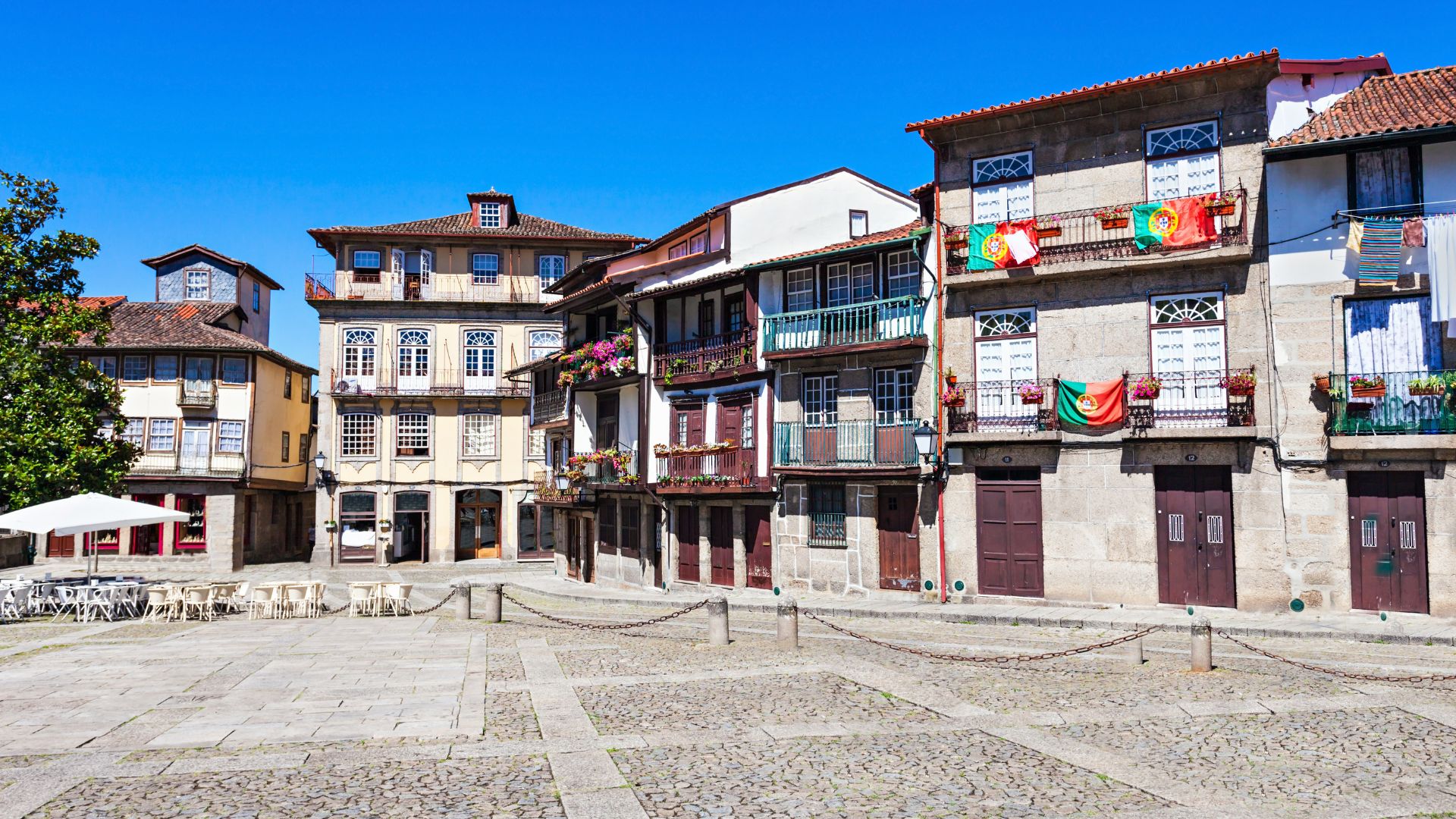
UNESCO Significance and European Capital of Culture
Guimarães earned its spot as a UNESCO World Heritage Site in 2001. The city was chosen because its historic centre shows how a medieval town can grow into a modern city without losing its old soul.
The buildings here reflect Portuguese architecture from the 15th to 19th centuries and are incredibly well preserved.
As I walked these streets, I could feel the pride locals have in their heritage. Signs and plaques around the historic area explain important events, making it easy to see why Guimarães is called the “birthplace of Portugal.”
In 2012, the city got even more attention as the European Capital of Culture, hosting art, concerts, and theater all year.
This blend of history and creativity makes Guimarães’ historic center not just a spot for sightseeing, but a place to experience Portuguese culture up close. The city’s commitment to keeping its identity alive shows in every detail, from restored facades to local festivals.
Guimarães Castle: Where Legends Were Forged
Guimarães Castle sits on a hill above the city, standing as a powerful symbol of Portugal’s early days. Its rugged walls, commanding towers, and neighboring chapels draw visitors from all over who want to step into the roots of Portuguese history.
History of the Castle of Guimarães
I felt the weight of centuries as I approached the Castle of Guimarães. Countess Mumadona Dias built this fortress in the 10th century to protect a nearby monastery from raids by Moors and Norsemen.
Key Facts:
- Founded: 10th century
- Original Purpose: Defense for monastery
- Period: Late Romanesque
Later, the castle became a strategic stronghold in battles that shaped Portugal’s destiny. Family drama, medieval intrigue, and the legendary birth of Afonso Henriques all unfolded here.
Statues and plaques remind visitors that without these walls, Portugal’s story might have turned out very differently.
Over the centuries, builders improved and fortified the castle, especially during the 12th century as Guimarães became the heart of the emerging nation.
Today, it stands as a proud National Monument and centerpiece of a UNESCO World Heritage city. Walking here, I realized these stone ramparts are living links to the bravery and struggles that forged a country.
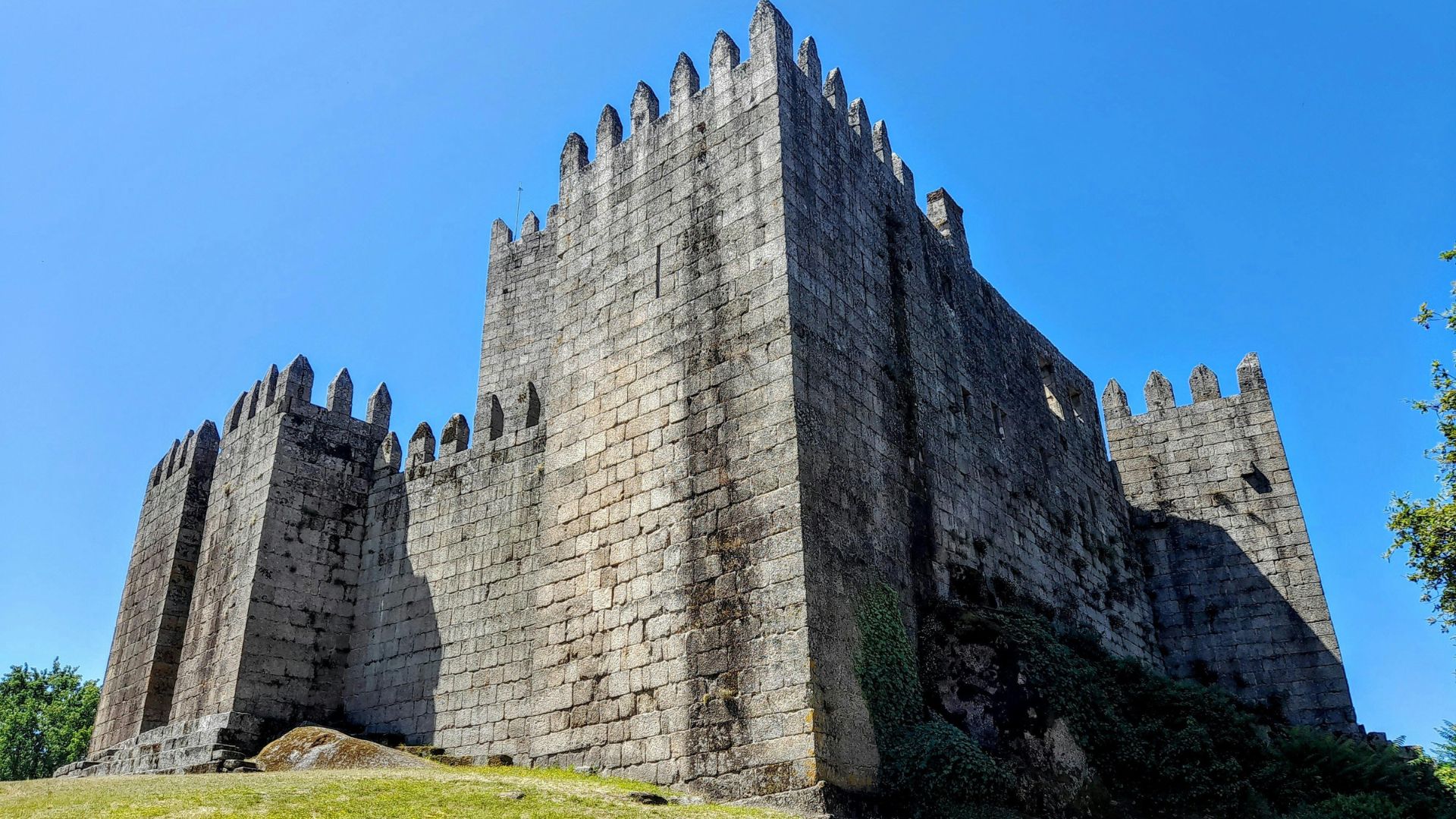
Visiting the Castle Walls and Towers
Exploring the castle honestly felt like stepping straight into the Middle Ages. Thick granite walls and seven sturdy towers circle a steep hill, and winding paths invite you to wander along the battlements.
What stood out:
- The rough, uneven stones underfoot
- Panoramic views over Guimarães’ walled city
- Tall towers perfect for photos
Inside, you won’t find lavish rooms or royal treasures. What you get is honest medieval architecture—simple, bold, and full of echoes.
I spent time in the open courtyard and stood atop the walls where soldiers once stood guard or sounded alarms during battles, like the Battle of Salado.
Some areas are roped off for preservation, but most of the exterior is open for exploring. The peaceful vibe now stands in stark contrast to the castle’s stormy past.
It’s not hard to picture the bustle of armor, shouts from lookouts, and the tension as Portuguese history played out right here.
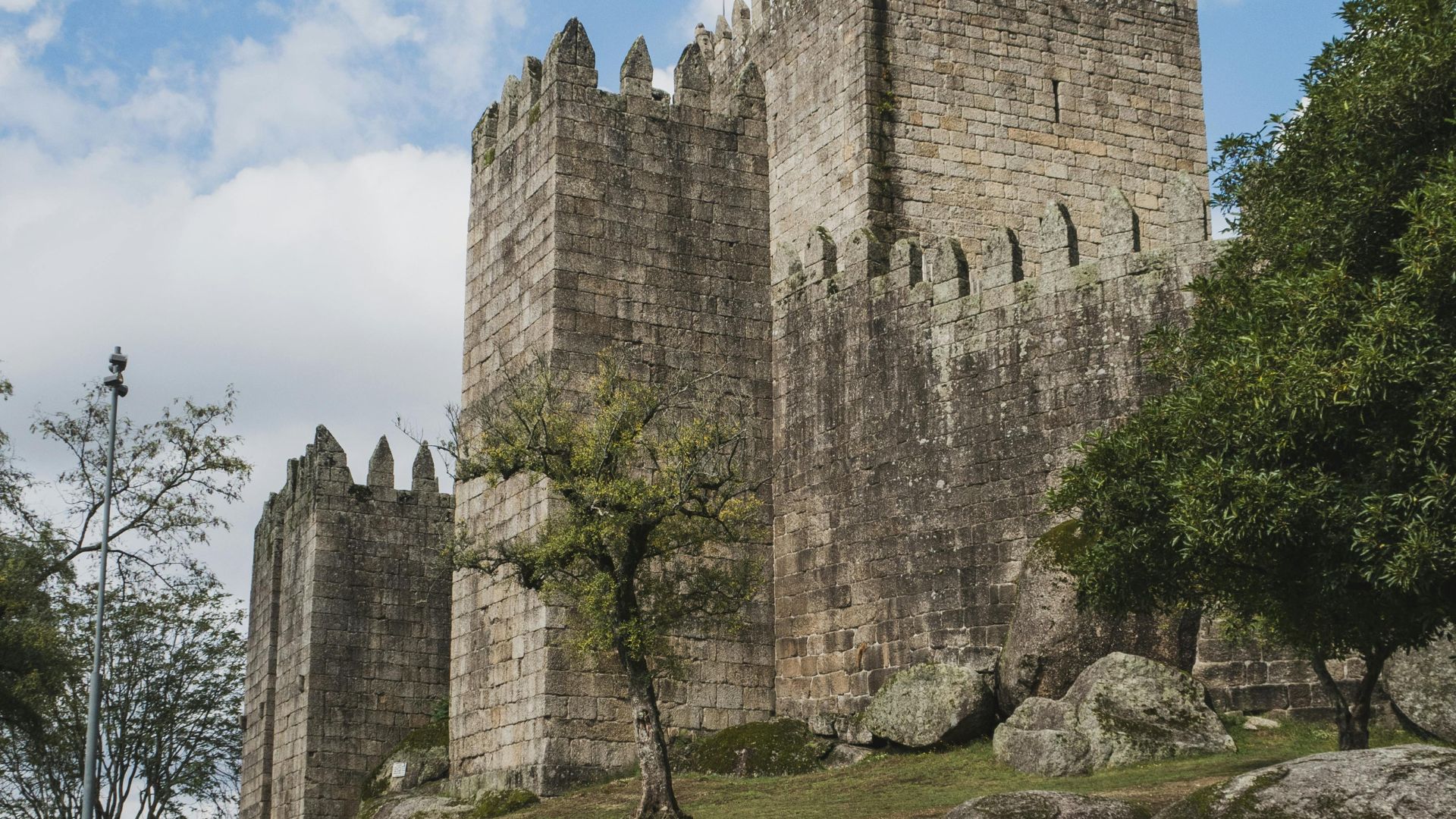
The Church of São Miguel: Royal Baptism
Just outside the castle sits the small Church of São Miguel, a simple stone building with a massive legacy. According to tradition (and plenty of local pride), Afonso Henriques was baptized here, starting a royal story that changed a nation.
The church’s interior is humble and quiet. I admired the old granite font that’s linked to the first king’s baptism.
Whether you’re religious or not, it’s tough not to pause and think about the impact this little space had on Portuguese history.
Visitors can usually step inside for free, and the sense of history hits you right away. The connection between church, castle, and the rise of Guimarães as Portugal’s birthplace is unmistakable.
I lingered in the cool, dim light, surrounded by stone and stories, before heading back out into the castle’s shadow.
The Palace of the Dukes of Braganza: Regal Beauty & Heritage
Walking through the Palace of the Dukes of Braganza in Guimarães feels like stepping into a chapter of Portuguese history. The palace’s grand halls, impressive artifacts, and medieval design reveal both royal splendor and the deep cultural roots of this UNESCO World Heritage city.
Inside Paço dos Duques de Bragança
The Ducal Palace immediately struck me with its size and elegance. The first Dukes of Braganza once lived here, and the palace features large stone halls, soaring wooden ceilings, and quiet courtyards.
Walking from room to room, I spotted grand fireplaces, arched windows, and decorative tiles that hinted at the Braganza family’s wealth and influence.
The palace isn’t just impressive from the outside. Inside, rooms are set up with furniture, rich tapestries, and collections of weapons and armor.
Seeing medieval swords and polished suits of armor gave me a real sense of what life was like for the nobility. Each space seemed to tell its own story.
Visitors can peek into the banquet hall—perfect for imagining lively feasts from centuries ago. The atmosphere is both formal and welcoming, with touches that show the palace’s role as a stronghold and a home.

Gothic Architecture and Artifacts
The Ducal Palace stands out for its unique blend of Gothic and Burgundian styles, pretty different from other palaces in Portugal. I noticed the pointed arches, tall chimneys, and stone columns—classic medieval architecture that somehow feels solid but still elegant.
Restorers have carefully preserved many original details. Some ceilings are made from heavy timber beams, making even the biggest rooms feel a bit cozy.
Light filters through small, decorated windows, casting patterns on the stone floors that add both mystery and beauty.
Artifacts are displayed throughout the palace. I saw antique chairs, religious statues, and collections of ceramics and precious metals.
These objects give a glimpse into the tastes and values of the noble family—their love for art, their religious faith, and their connections to other European courts.
Here, history doesn’t just sit in display cases; it fills every corner.
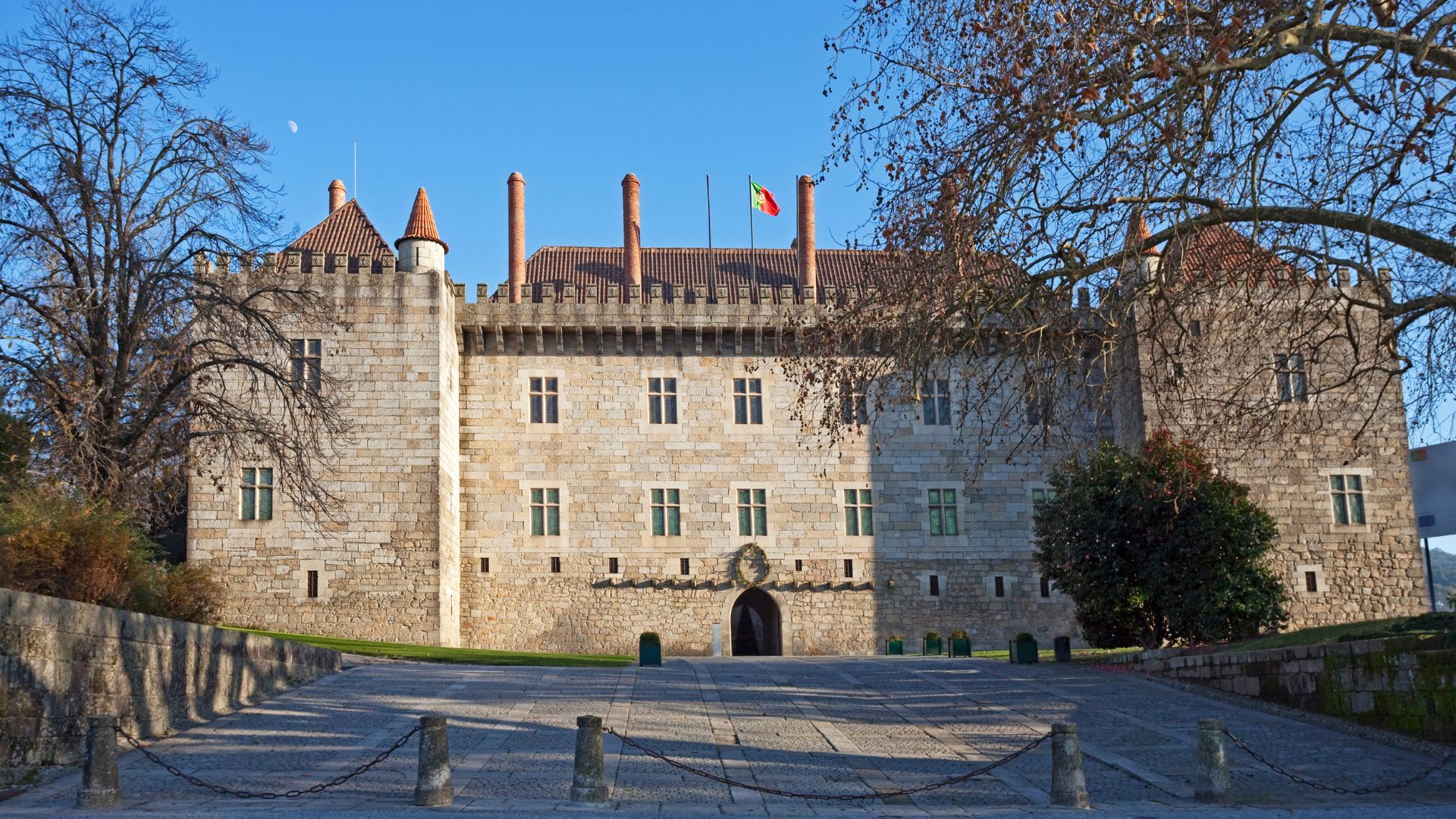
Museums and Cultural Heritage
Guimarães bursts with museums and cultural corners beyond the palace walls. After wandering through Paço dos Duques de Bragança, I made my way to the nearby Alberto Sampaio Museum.
This little spot shows off medieval art from local churches and monasteries. I found old altar pieces and ancient vestments that tell stories you won’t hear anywhere else.
I also stopped by the Martins Sarmento Museum to dig into the region’s much older history. They display archaeological finds—pottery, tools, and artifacts—that reveal just how far back Guimarães’ roots go.
These museums, along with the palace, really keep the city’s cultural heritage alive. They connect the grandeur of Portuguese history to the traditions of people who lived here centuries ago.
Guimarães feels like a living museum, with its past woven right into daily life.
Guimarães Beyond the Icons: Squares, Food, and Hidden Charms
Wandering Guimarães isn’t just about ticking off castles and palaces. The town’s energy spills into every cobbled street, square, and buzzing café.
I stumbled across the city’s soul in quiet churches, cozy taverns, and neighborhoods where the past seems to linger.
Church of Our Lady of Oliveira and Spiritual Heritage
Right in the heart of the old town, the Church of Nossa Senhora da Oliveira towers above Largo da Oliveira. This spot is easily one of Guimarães’ prettiest squares.
The church goes way back—over a thousand years. Stepping inside, I heard footsteps echo on stone and saw candlelight flicker, which set a peaceful mood.
The Gothic bell tower caught my eye right away. Medieval carvings and beautiful altarpieces line the walls, and locals still celebrate religious festivals here.
Old traditions stay alive in this church. Outside, the square bustles with neighbors chatting and kids playing. I loved soaking it in over a morning coffee.

Tasting Traditional Dishes in Guimarães
Guimarães’ food scene completely won me over with its bold flavors and unpretentious dishes. Restaurants and little taverns serve up traditional plates you won’t find just anywhere.
I tried rojões—tender pork, marinated and fried with spices, sometimes paired with potatoes. It was pure comfort food.
Then there’s toucinho do céu, a golden almond dessert that’s dangerously good if you have a sweet tooth. Locals love steak sandwiches too, especially with a glass of crisp vinho verde, the region’s sparkling young wine.
Many places use recipes handed down for generations. Every meal tastes like it came straight from someone’s family kitchen.

Best Cafés and Taverns for a Local Experience
One afternoon, I settled in at Cantinho dos Sabores and let fragrant stews and fresh bread turn lunch into something memorable. For a real local hangout, I found Taberna Trovador packed with students and older regulars.
The wooden tables and handwritten menus made it feel frozen in time. I grabbed a seat outside and watched the city go by.
Locals and travelers mixed together, laughing and passing around simple meals—cheese, sausage, olives, all meant for sharing. It’s surprisingly easy to feel like you belong, even if you’re just visiting.
Exploring Couros District’s Historic Past
The Couros District sits off the main tourist trail, but honestly, that’s part of its charm. This neighborhood once powered Guimarães’ leather industry, and you can still see stone water channels weaving between old workers’ homes.
I wandered narrow lanes and found tucked-away workshops where artists and craftsmen still work by hand. The area feels more local, with fewer crowds and a stronger sense of daily rhythm.
Medieval echoes linger everywhere, especially when I paused by ancient stone walls. The city’s past and present seem to overlap in this quiet corner.
Day Trips & Practical Tips for Your Guimarães Adventure
Getting to Guimarães is pretty straightforward whether you start in Porto or Lisbon. The city makes a great base for exploring northern Portugal’s treasures.
There’s plenty for history lovers, nature fans, and anyone chasing a bit of culture.
How to Reach Guimarães from Porto and Lisbon
I found getting to Guimarães from Porto a breeze. There’s a direct train from Porto São Bento station, just over an hour and fifteen minutes.
Trains run regularly, and tickets are easy on the wallet. If you land at Porto Airport, you can hop on the Metro to the main train station—no need to mess with taxis or buses.
Coming from Lisbon takes more time. I grabbed the high-speed Alfa Pendular or Intercidades train to Porto, which took about three hours.
From Porto, I switched to the regional train to Guimarães. If you drive, the A3 and A7 highways connect Porto and Guimarães, and you can usually find parking in the center. I’d suggest arriving early to beat the crowds and stretch your day.
| Starting Point | Mode | Duration | Notes |
|---|---|---|---|
| Porto | Train | 1 hr 15 min | Direct, frequent, budget-friendly |
| Porto Airport | Metro/Train | ~1.5 hrs total | Easy connections to center |
| Lisbon | Train+Train | ~4 hrs | Change in Porto |
| Lisbon | Car | ~3.5 hrs | Scenic drive, toll roads |
Nearby Wonders: Penha Mountain and Sanctuary
One of my favorite side trips from Guimarães turned out to be Penha Mountain. You can hop on the “Teleférico de Guimarães,” a cable car that whisks you up in about ten minutes.
The views stretching over the city and countryside are honestly worth it, especially if the sky’s clear.
At the top, I wandered around the Sanctuary of Penha—a peaceful church surrounded by gardens and odd-shaped granite boulders. Trails wind all over the mountaintop, making it perfect for a gentle walk or a lazy picnic.
Picnic spots, little cafés, and plenty of shade make it a relaxing escape after a morning in town.
Here’s what worked best during my Penha visit:
- Cable Car: Easy to board near the town center
- Sanctuary: Free to enter, tranquil atmosphere
- Walking trails: Marked, family-friendly
- Best time: Early morning or late afternoon for fewer crowds
Exploring Braga and the Douro Valley
Braga sits just 25 km from Guimarães and, honestly, you shouldn’t skip it. I hopped on a train—just a 30-minute ride—and spent the day wandering around Bom Jesus do Monte and the old quarter.
That grand baroque staircase at Bom Jesus? It absolutely blew me away. I grabbed a coffee in the center, soaking up the lively atmosphere.
If you’ve got a bit more time, you might want to check out the Douro Valley. I went on a guided day trip from Guimarães, stopping at terraced vineyards for wine tastings and taking in those river views.
The valley’s famous for its port wine and those rolling, postcard-perfect landscapes. It’s easily one of the prettiest regions in Portugal.
Here’s a quick list to help you plan:
- Braga: Direct train, tons of departures
- Douro Valley: Easiest with a guided tour or your own car
- Activities: Sightseeing, wine tastings, boat rides
- Highlights: Baroque churches, scenic vistas, world-famous wine
Getting out of Guimarães let me really experience the north—each spot had its own vibe, and I honestly loved discovering what made them unique.
